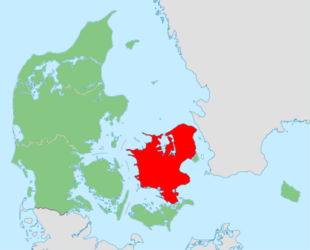Denmark

Zealand -Denmark Case Study
Zealand, also Seeland, is the largest and most populated island in Denmark with a population of just under 2.5 million.
The study area is located in the Continental biographical region and the main soil type is Cambisol & Luvisol. The total size of the study area is 703,100 ha of which 337,488 is utilised agricultural area.
Key agricultural facts
Zealand Denmark | Eastern Scotland | Mazovia Poland | Közép Mag. Hungary | Toscany Italy | Jaén Spain | |
| Total number of farm holdings | 7.850 | 6.610 | 302.290 | 62.080 | 78.900 | 254.293 |
| Average farm size [ha] | 61 | 196 | 7 | 5 | 10 | 18 |
| Farm holdings < 5 ha [%] | 4 | 15 | 55 | 94 | 62 | 60 |
| Farm holdings > 50 ha[%] | 32 | 60 | 1 | 1 | 3 | 6 |
| Owner occupied[%] | 72 | 65 | 89 | 36 | 75 | 79 |
Source: Eurostat data, 2010
The average farm size in the Zealand is 61 ha, which is greater than the European Union average of 15 ha. There are very few small holdings of less than 5 ha (4%) and a large proportion of holdings over 50 ha (32%). 94% of the agricultural area is arable land and the dominant farming system is cereal production (59% of UAA combined with grass-seed or livestock production (primarily pigs)). Around 72% of the farmed land is owner occupied which is close to the EU average of 70%.